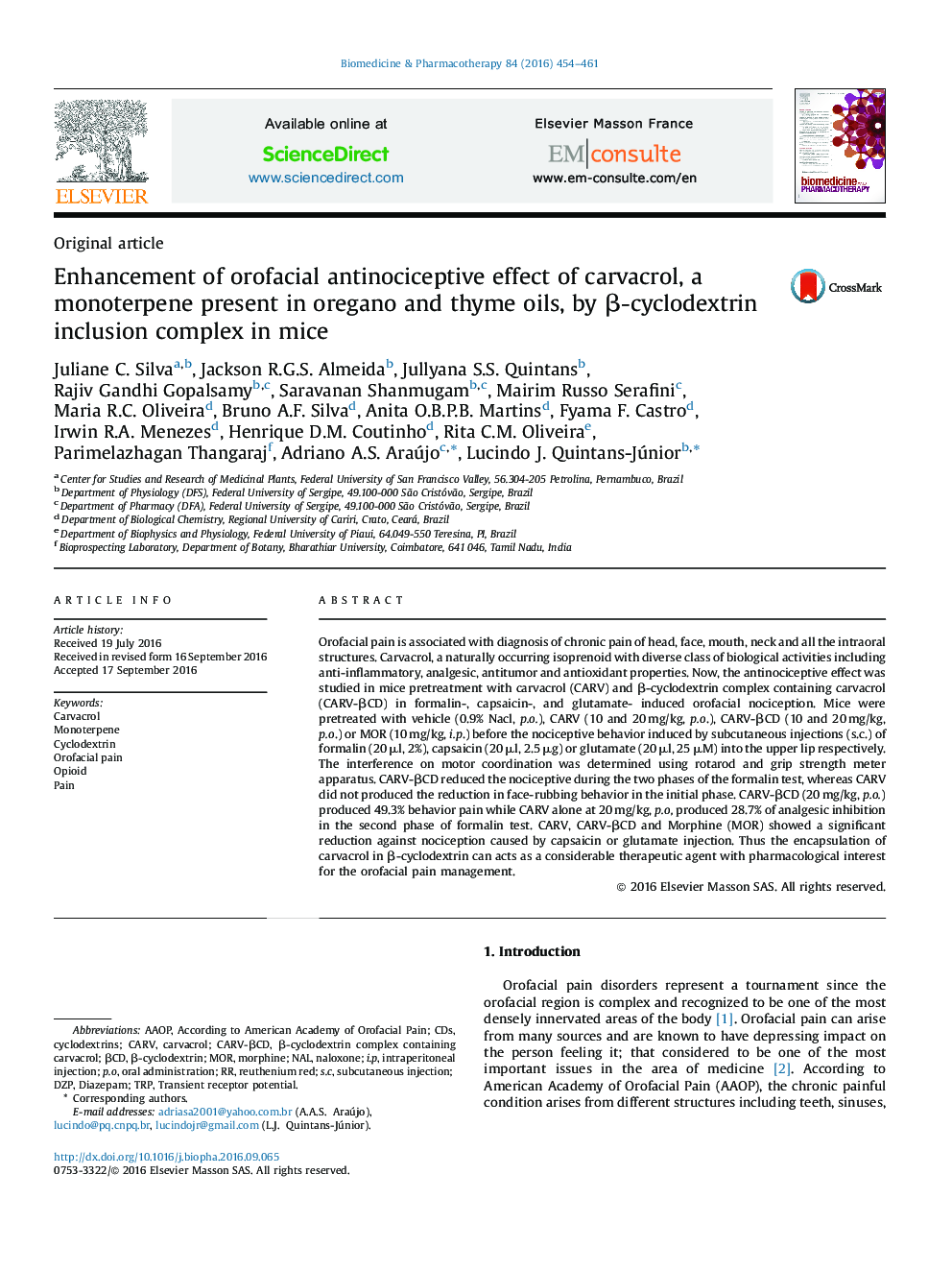| Article ID | Journal | Published Year | Pages | File Type |
|---|---|---|---|---|
| 5553384 | Biomedicine & Pharmacotherapy | 2016 | 8 Pages |
Orofacial pain is associated with diagnosis of chronic pain of head, face, mouth, neck and all the intraoral structures. Carvacrol, a naturally occurring isoprenoid with diverse class of biological activities including anti-inflammatory, analgesic, antitumor and antioxidant properties. Now, the antinociceptive effect was studied in mice pretreatment with carvacrol (CARV) and β-cyclodextrin complex containing carvacrol (CARV-βCD) in formalin-, capsaicin-, and glutamate- induced orofacial nociception. Mice were pretreated with vehicle (0.9% Nacl, p.o.), CARV (10 and 20 mg/kg, p.o.), CARV-βCD (10 and 20 mg/kg, p.o.) or MOR (10 mg/kg, i.p.) before the nociceptive behavior induced by subcutaneous injections (s.c.) of formalin (20 μl, 2%), capsaicin (20 μl, 2.5 μg) or glutamate (20 μl, 25 μM) into the upper lip respectively. The interference on motor coordination was determined using rotarod and grip strength meter apparatus. CARV-βCD reduced the nociceptive during the two phases of the formalin test, whereas CARV did not produced the reduction in face-rubbing behavior in the initial phase. CARV-βCD (20 mg/kg, p.o.) produced 49.3% behavior pain while CARV alone at 20 mg/kg, p.o, produced 28.7% of analgesic inhibition in the second phase of formalin test. CARV, CARV-βCD and Morphine (MOR) showed a significant reduction against nociception caused by capsaicin or glutamate injection. Thus the encapsulation of carvacrol in β-cyclodextrin can acts as a considerable therapeutic agent with pharmacological interest for the orofacial pain management.
